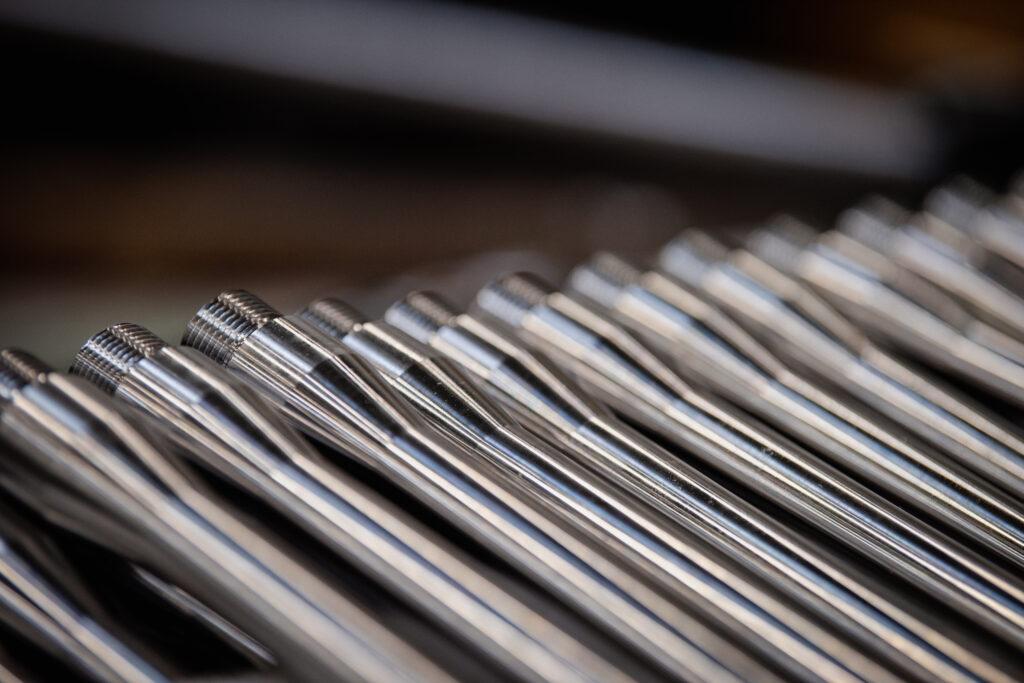When looking into improving your accuracy or range with an AR-15, someone will mention your twist rate at some point. What are AR-15 twist rates, and how does it affect shooting accuracy? This AR-15 barrel twist rate guide will answer these questions and help you identify the best twist rate for your gun.

What Is Barrel Twist Rate?
Bullets fired from guns made after the 19th-century spin/twist during flight. The spin boosts accuracy by enhancing a round's stability and aerodynamics.
Barrels make bullets spin with the help of grooves or rifling that line the inside of a barrel. Tighter or shorter grooves lead to a faster spin rate, while longer grooves cause a slower spin.
AR-15 rifling twist rate or barrel twist rate refers to the number of times a bullet spins per inch of barrel length. For example, a 1:8 twist rate means a slug will complete a spin once every 8 inches as it travels through a barrel.
If you have a 16-inch barrel with a 1:8 twist rate, the bullet will complete a spin twice before exiting the muzzle. An 18-inch barrel with a 1:6 twist rate will cause a bullet to spin three times before leaving the gun. The more twists a bullet can complete before leaving the barrel, the more stable the slug will be when it exits the muzzle.
Is Twist Rate a Safety Concern?
You can safely fire a bullet of any weight or size from a compatible barrel with any twist rate. While the rate of twist does not affect safety, it can affect bullet accuracy and range. If a barrel’s twist rate is slower than the recommended rate of spin for a specific bullet, you are less likely to hit targets accurately beyond 100 yards.
A barrel with a faster-than-recommended spin rate may have some or no effect on your accuracy if firing a heavy bullet. On the other hand, excessive spin on a light bullet (under 50 grains) may lead to overspin, which can make a bullet unstable enough to fly off trajectory downrange.
Here’s an AR twist rate chart from the NRA that sheds more light. The numbers at the top of the chart refer to bullet weight.

How Much Does Twist Rate Matter?
The lower ratio of the twist rate, the more spin a bullet will have. For instance, the same bullet fired from a 1:6 barrel will spin faster than one from a 1:7 barrel.
Heavier and longer bullets require a faster and tighter twist rate for adequate flight stability and accuracy. That’s because these bullets are less aerodynamic, and the spin improves the bullet’s ability to overcome wind resistance and travel straight to reach a target. If you select the optimal twist rate for your ammo, you can look forward to better shooting accuracy and range.
Common AR-15 Twist Rates
AR-15 twist rates typically vary between barrels, and the difference can be due to barrel length, rifling, and other factors. You can usually find a barrel’s twist rate listed under its features or specifications. Below are some of the most popular AR-15 barrel twist rates:
1:7
A 1:7 twist rate barrel is a favorite among target practice and combat shooters because it is effective for stabilizing long-range, modern bullets that weigh over 69 grains. The twist rate can also work with most rounds that weigh 55 to 70 grains. It is so effective for combat shooting that the U.S. military uses this twist rate in its M4, HK 416, and M16-A4 rifles.
You can get barrels between 6 and 24 inches with the 1:7 twist rate. The shorter barrels are suitable for close-range combat, while the longer barrels offer better velocity for long-range shooting.
1:8
Compared to other AR-15 twist rates, 1:8 is the most versatile. Barrels with this twist rate can work well with most ammo, offering sufficient stability to 70 to 90-grain bullets and preventing overspin in light rounds. While 1:8 twist rate barrels can fire most slugs with adequate accuracy, the best results occur when firing 60 to 80-grain bullets.
1:9
Barrels with a 1:9 twist offer a slower spin that works best with short, lightweight bullets (40 to 62-grain projectiles). You can use larger bullets with the barrel, but the rate of spin will not be fast enough to deliver optimal bullet stability and accuracy.
Rifle Barrel Twist Rate vs. Bullet Weight
Listening to the rifle barrel twist rate vs. bullet weight conversation, you will discover two sides – one that says bullet weight determines the best twist rate, and the other that believes bullet length determines twist rate. Both sides have a point.
Heavier bullets need more force to propel them in a straight line to hit far-off targets. Adding spin to such bullets makes them more aerodynamic and stable, enabling them to travel further in a straight line. If shooting ammo on the heavy end of the spectrum (over 70 grains), a 1:7 twist rate is ideal. However, if shooting lighter ammo (50 grains or less), a 1:9 twist rate will suffice.
On the other hand, you have experts who say that bullet length determines twist rate more than weight. The argument makes sense because, in most cases, the longer a bullet is, the heavier it becomes.
You also have the new lightweight copper and zinc bullets that are extra long to weigh the same as their lead counterparts. Simply put, many longer bullets have extra weight that requires a faster twist rate for better flight stabilization and accuracy.
What's the Best AR-15 Twist Rate?
The best twist rate for an AR-15 will depend on various factors, such as your ammo type and how you intend to use your gun. As we’ve established, heavy and lightweight bullets require different rates of spin, but if you want a twist rate that works well with various bullet weights, we recommend 1:8.
Among all the AR-15 twist rates, 1:8 inches is the most versatile and multipurpose. Just check out various AR twist rate charts, and you'll see that the 1:8 twist rate handles most AR-15 loads well.
While the 1:8 twist rate can handle most loads, it works best with 60 to 80-grain loads. If shooting light ammo, the 1:8 twist rate won’t cause the slug to spin out of control and veer dramatically after flying a few yards. The twist rate can also stabilize slugs that weigh up to 90 grains.
However, if you want the very best bullet stabilization and accuracy, always use the twist rate recommended for your specific ammo.

Get Premium AR-15 Barrels, Made in the U.S.A.
We’ve reached the end of our AR-15 barrel twist rate guide, and here are the things to remember – a slower twist rate (1:9) works best with lighter, shorter bullets, but it can also stabilize heavy bullets aimed at close-range targets. If you are a hunter or long-range shooter firing long and heavy slugs at targets over 100 yards away, you are better off switching to a faster twist rate (1:7 or 1:8).
How can you get barrels with your preferred AR-15 twist rates? Head to our online store today to shop industry-leading AR-15 barrels that match your unique shooting needs.

2 Comments